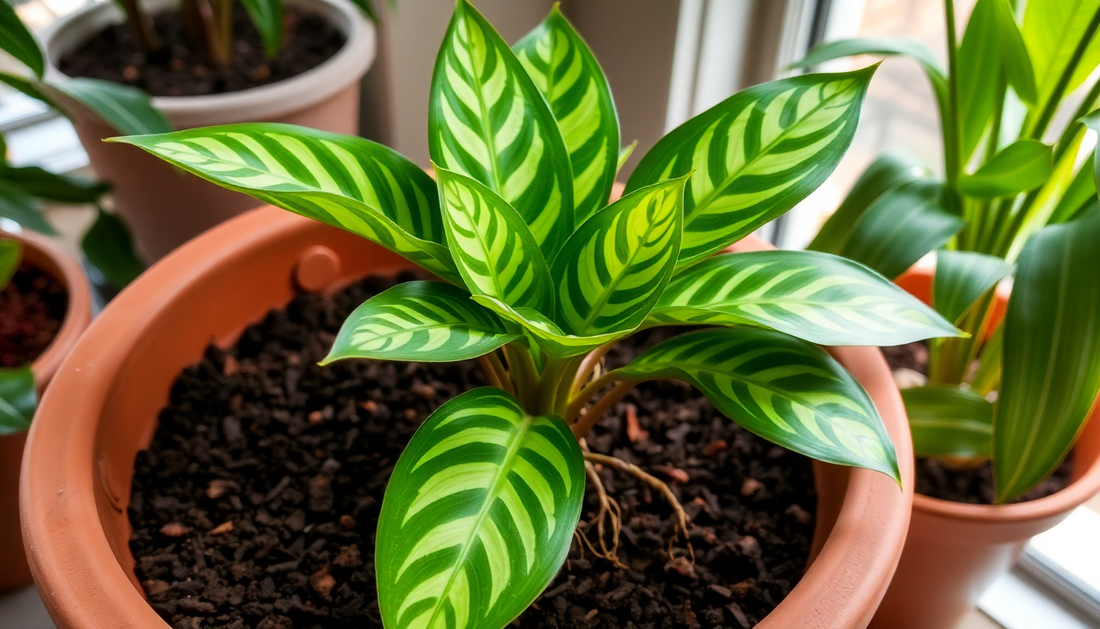
The Best Potting Mix for Prayer Plants (Maranta)
As a passionate gardener, I've always been fascinated by the captivating prayer plant (Maranta). These stunning foliage plants, with their intricate leaf patterns and unique folding behavior, have a special place in my heart. If you're a fellow Maranta enthusiast, you know that providing the right growing conditions is crucial for their health and vibrant appearance.
One of the most critical factors in caring for prayer plants is the potting mix. The right soil blend can make all the difference in ensuring your Maranta thrives. In this comprehensive guide, I'll share my expertise on the best potting mix for prayer plants, so you can create the perfect environment for your beloved Marantas.
Understanding the Needs of Prayer Plants
Prayer plants, also known as Maranta, are native to the tropical regions of the Americas. In their natural habitat, they thrive in the dappled shade of the forest floor, where the soil is rich, well-draining, and consistently moist. To replicate these conditions in your home, you'll need to choose a potting mix that closely mimics their natural environment.
Prayer plants have several unique characteristics that influence their soil requirements:
Moisture-Loving Nature
Marantas are known for their love of moisture. They prefer a consistently moist, but not waterlogged, soil. The potting mix should be able to retain moisture without becoming soggy.
Shallow Root Systems
Prayer plants have relatively shallow root systems, which means they don't require a deep planting medium. A well-aerated, nutrient-rich mix that supports their root growth is ideal.
Sensitivity to Salts and Minerals
Marantas are sensitive to high levels of salts and minerals in the soil. Excess salts can lead to leaf discoloration, stunted growth, and even plant death. It's essential to choose a potting mix that is low in these elements.
Preference for Acidic Conditions
Prayer plants thrive in slightly acidic soil, with a pH range between 5.5 and 6.5. This helps them absorb nutrients more efficiently.
The Best Potting Mix for Prayer Plants
After considering the unique needs of prayer plants, I've found the perfect potting mix formula that will keep your Marantas happy and healthy. This blend combines the right ingredients to create the ideal growing environment for your beloved plants.
Ingredients:
- 40% Peat Moss or Coco Coir: Peat moss or coco coir provide excellent moisture retention and aeration, while also helping to maintain the slightly acidic soil conditions that Marantas prefer.
- 30% Compost: High-quality compost adds vital nutrients and organic matter to the soil, supporting the plant's growth and overall health.
- 20% Perlite or Vermiculite: These lightweight, porous materials improve drainage and air circulation in the potting mix, preventing waterlogging.
- 10% Orchid Bark or Charcoal: The addition of orchid bark or charcoal helps to further enhance drainage and aeration, while also absorbing excess salts and minerals.
Mixing the Perfect Potting Mix
To create the ideal potting mix for your prayer plants, follow these steps:
- Start with a large container or mixing bin.
- Add the peat moss or coco coir and compost, and mix them together thoroughly.
- Incorporate the perlite or vermiculite, ensuring an even distribution throughout the mix.
- Finally, add the orchid bark or charcoal and mix everything together until you have a well-blended, uniform potting mix.
Adjusting the pH
Once you've created the base potting mix, it's important to test the pH and make any necessary adjustments. Marantas prefer a slightly acidic soil, so aim for a pH between 5.5 and 6.5.
If the pH is too high (alkaline), you can lower it by adding a small amount of sulfur or aluminum sulfate to the mix. Conversely, if the pH is too low (acidic), you can raise it by incorporating a bit of lime or dolomite.
Planting and Maintaining Prayer Plants
Now that you have the perfect potting mix, it's time to plant your prayer plants. Here are some tips for ensuring their continued success:
Planting
- Fill the planter or pot with the prepared potting mix, leaving enough space at the top for the plant's root ball.
- Gently remove the prayer plant from its current container and place it in the new pot, ensuring the top of the root ball is level with the soil surface.
- Backfill around the plant with more of the potting mix, pressing it down gently to remove any air pockets.
Watering
- Water your prayer plant thoroughly, ensuring the soil is evenly moist but not waterlogged.
- Check the soil regularly and water when the top inch or two begins to dry out. Avoid letting the soil become completely dry.
- Mist the leaves regularly to increase humidity around the plant.
Fertilizing
- Feed your prayer plant every two to three months with a balanced, water-soluble fertilizer diluted to half strength.
- Avoid over-fertilizing, as this can lead to salt buildup and damage the plant.
Repotting
- Repot your prayer plant every one to two years, or when it becomes root-bound.
- Use the same potting mix formula to ensure the plant's continued health and growth.
By following these guidelines and providing your prayer plants with the perfect potting mix, you'll be rewarded with lush, vibrant foliage and the mesmerizing folding behavior that makes these plants so captivating.
Conclusion
Caring for prayer plants (Maranta) requires a bit of attention, but the rewards are well worth it. By using the right potting mix, you'll create the ideal growing conditions for your beloved Marantas, ensuring they thrive and bring joy to your indoor garden. Remember to monitor the soil moisture, pH, and nutrient levels, and your prayer plants will reward you with their stunning, unique foliage for years to come.
Happy gardening!







No comments